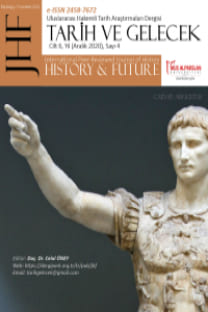Mitroviça Müzesi’nde büyük arkeolojik değere sahip bir obje
Arkeoloji, insan toplumlarının geçmişini bilmemizi sağlayan ve ister taşınabilir ister durağan olsun birçok sergiyi gün ışığına çıkaran bilim dalıdır. Ancak rastgele buluntular da, arkeolojik keşif gezileri gibi amaçlı ve hazırlıklı yapılanlar kadar değerlidir.
Mitroviça’daki Muse heykeli, şehrin spor salonunun inşası için temel kazısı sırasında tesadüfen keşfedilmiştir, ancak Kosova’da benzersiz olduğu için değeri son derece yüksektir, diğer ülkelerde ise çok nadirdir.
Muse heykeli kurşundan yapılmıştır, bu da bize bu bölgenin metallerin işlenmesini çok erken bildiğini gösterir, ayrıca bize sömürünün yanı sıra metal işleme zanaatının da çok iyi bilindiği bilgisini verir.
Mitroviça’daki Müze heykeli, şehir müzesinde muhafaza edilen en değerli eserlerden biridir, bu eser aynı zamanda özel bir güvenliğe sahiptir, kopyası ise müze sergisinde halka sunulmaktadır.
An object of great archaeological value in the Museum of Mitrovica
Archeology is the science that allowed us to know the past of human societies and brought to light many exhibits, whether movable or static. However, random finds are just as valuable as those that are made with purpose and prepared, such as archaeological expeditions.
The Muse statue in Mitrovica was accidentally discovered during the excavation of the foundations for the construction of the city's gymnasium, but its value is extremely high since it is unique in Kosovo, while in other countries it is very rare.
The statue of the Muse is made of lead, which shows us that this region knew the processing of metals very early, it also gives us information that apart from exploitation, the craft of metal processing was also very well known.
The statue of the Museum in Mitrovica is one of the most precious exhibits that is kept in the city museum, this exhibit also has a special security, while its copy is presented to the public in the museum exhibition.
Keywords:
Museum, exhibits, archeology, culture, civilization, exploitation.,
___
- Bauer, A. 1963. Roman lead sculpture, Member (ciceroni) of the association of Croatian archaeologists, XVII, Zagreb;
- Golović, R. 1956. “Introduction to the prehistory of Kosovo - Metohija”, “Glasnik Muzeja Kosovo i Metohija”, Prishtina;
- Hajzeri Pajazit, 2016. Immovable construction heritage in Mitrovica and its surroundings, Dissertation, Tirana;
- Hajzeri Pajazit, 2021. Summary of studies from Cultural Heritage II, Prishtina;
- Integrated conservation, “CHwB”, Kosovo;
- Hajzeri Pajazit, “Kosovo - Kosova”, 1973. group of authors, Belgrade;
- Hajzeri Pajazit, “Mitrovica and surroundings, cultural mosaic”, 2000, group of authors, Mitrovica;
- Murati Sylejman, “The past of Tito’s Mitrovica in the collections of the Municipal Museum”, Mitrovica;
- Morina, Tefik 1974. “The path of development and perspective of the museums of Kosovo”, “Bulletin of the Museum of Kosovo, Glasnik Muzeja Kosovo, XII, (1973 - 1974), Pristina;
- Morina, Tefik, “Mitrovica and surroundings”, 1979. (Monograph), group of authors, Mitrovica;
- Osmani, Jusuf, 2003. “Settlements of Kosovo, Mitrovica, Zveçani, Leposaviqi (Albaniku) and Zubin Potoku”, Prishtina;
- Zotovic Ljubica, 1959-1960. The lead statue in the museum of Mitrovica, Year book of the museum of Kosovo and Metohija, Pristina;
- http://www.enciklopedija.hr/Natuknica.aspx?ID=42616, Croatian Encyclopedia, online edition. Miroslav Krleža Lexicographic Institute, 2021. Accessed 21 August 2022.
- Yayın Aralığı: Yılda 4 Sayı
- Başlangıç: 2015
- Yayıncı: Celal ÖNEY
Sayıdaki Diğer Makaleler
Kutsal Roma Cermen İmparatoru Şarlken’in Evrensel Monarşi Politikası
Kent Kimliği Açısından Önemli Bir Ermeni Kilise Mimarisinin İncelenmesi: Digor Khtzkong Manastırı
Türk Evliliğinde Dilsel Örüntülerle Kadına Yönelik Ayrımcılığın İncelenmesi
Tarihi Mudurnu Kentinin Bellek Mekanları Olarak Kültürel Miras Değerleri
Muhammed Kâsım Hindûşâh Esterabâdî’nin Târîh-İ Firişte’sinde Gazneli Dönemi Şairleri
Ankara’da Ahi Şerafeddin Evkafı (XVI-XIX. Yüzyıllar)
Esaretin Bedeli: Memlûk Devleti’nin Kıbrıs’ı Fethi Ve Iı. Jean De Lusignan’ın Esareti
Arnavutların 1934 yılında Kosova’dan Arnavutluk’a göçüne bir bakış
